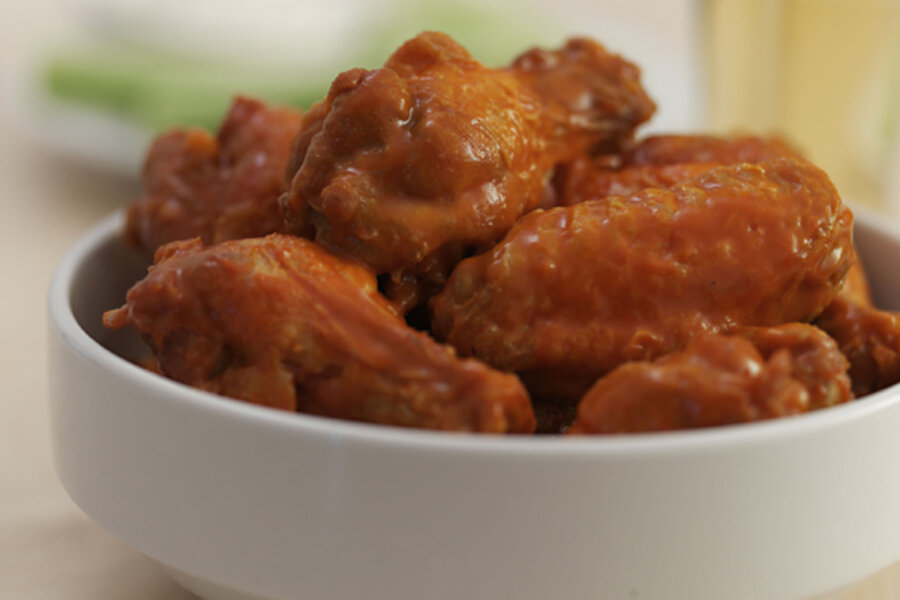Food price outlook: Will Buffalo wings break your budget in 2013?
Loading...
Feeding guests at your Super Bowl party could get a little expensive this year.
Why? The price of Buffalo wings has spiked 52 percent in the past year, and analysts expect that to continue. “The wings are really causing some issues,” says Bruce Reinstein, vice president of strategic development and sourcing for Consolidated Concepts, based in Boston. The firm works with over 15,000 of small to mid-size food service chains to help them plan out their food supply purchases.
“Wings are the new popular quick service food,” Mr. Reinstein says, as the fast casual landscape becomes more sports-bar oriented and demands a larger amount of wings. Plus, fast food giant McDonald’s tested bone-in chicken wings in a few Atlanta locations over the summer. If a national rollout follows “they have so much buying power they will distort the market.”
Another problem: Poultry farms are producing larger and larger chickens, making the smaller wings and legs used for Buffalo wings few and far between.
The Buffalo wing isn’t the only food item projected to jump in price next year, though it is one of the more dramatic upward shifts. Because of a drought that parched the Midwestern part of the country this past summer, nearly every food product tied to corn will see price increases in 2013. And overall, household food prices are expected to rise between 3 and 4 percent, according to projections from the 2012-2013 Food Price Outlook from the US Department of Agriculture.
In addition to the corn itself, which had a weak crop as a result of the drought, prices will go up on proteins like beef and chicken, because livestock feed is primarily made of corn.
The drought also affected wheat and soy crops, which will translate to higher prices on things like bread and cooking oil.
Beef in particular will increase, analysts predict, in part due to the drought and in part due to the high demand of cheap meat cuts in restaurants – flank steak, and skirt steak, for instance – and ground beef, because of the popularity of hamburgers. Wholesale ground beef cost $1.71 per pound a year ago; now, it’s at $1.89 per pound
“Companies are trying to keep costs down, so products that aren’t as expensive per pound, they are very much in demand,” Reinstein says.
Prices are already higher than last year, but the impact of the summer drought will be felt most acutely in the new year.
“The impact of a drought takes time There’s still inventory of corn, but then the old corn is gone, you have to build it up. It’s a cycle,” he says.
Still, not everything on your grocery list is getting more expensive. Sugar was cheaper in 2012, and dairy products this November were 1.1 percent below the average price they were a year ago, according to the USDA. But Reinstein is hesitant to make any predictions that prices will go down, at least until we’ve seen how mild or severe the coming winter will be. This past year, produce prices were down thanks to an unusually mild winter, but the market is likely to correct itself, especially if chilly weather hits key planting spots like Florida and California.
“There’s no way of really knowing if we’re going to have that kind of luck again,” he says. “If we have any issues with weather that will make information about produce more clear.”








